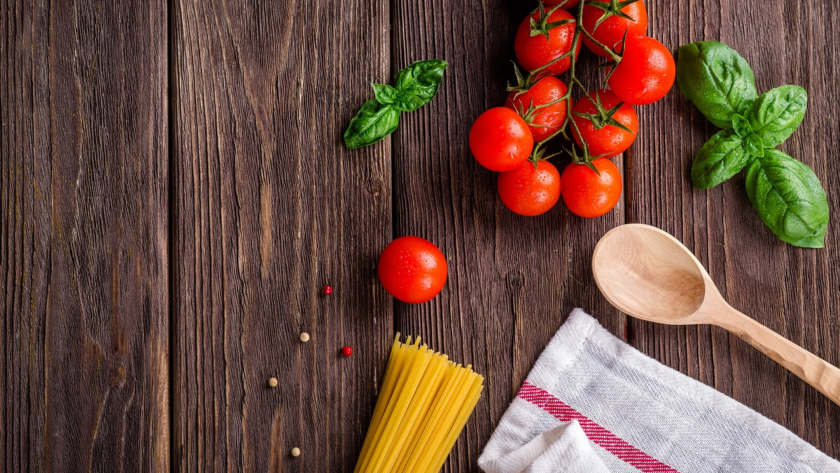As summer comes to a close and tomato season is in full swing, you may find yourself with a few overripe tomatoes on your hands. But don’t toss them just yet!
Contrary to popular belief, overripe tomatoes are safe to eat and can even be more nutritious than their unripe counterparts. In this article, we’ll explore the truth about overripe tomatoes, their nutritional value, how to tell if a tomato is overripe, and safe handling/storage practices.
We know that wasting food can be frustrating and guilt-inducing, so we’re here to help you make the most out of your ripest tomatoes. Plus, learning about the benefits of eating overripe tomatoes may change the way you view food waste altogether.
So let’s dive in and discover all there is to know about these juicy fruits!
Key Takeaways
- Overripe tomatoes are safe to eat and more nutritious than unripe counterparts.
- They contain higher levels of lycopene, a powerful antioxidant that may help prevent certain types of cancer.
- Cooking techniques can affect antioxidant benefits, and they should be stored separately from fruits and vegetables that release ethylene gas.
- Overripe tomato recipes such as chutney are a sustainable way to reduce food waste.
The Truth About Overripe Tomatoes
You might think those squishy, overripe tomatoes are no good, but let me tell you, they’re perfectly safe to eat and can even add a burst of sweet flavor to your dishes.
Contrary to popular belief, overripe tomatoes do not pose any potential health risks as long as they haven’t been contaminated by bacteria or other harmful substances.
One of the misconceptions about overripe tomatoes is that they’re spoiled and unfit for consumption. However, this couldn’t be further from the truth.
Overripe tomatoes may look unappealing with their soft texture and wrinkled skin, but they’re actually more nutritious than their firm counterparts. In fact, studies have shown that overripe red tomatoes contain higher levels of lycopene – a powerful antioxidant that may help prevent certain types of cancer – than underripe ones.
Eating overripe tomatoes is also a great way to reduce food waste and make use of produce that might otherwise end up in the trash.
The Nutritional Value of Overripe Tomatoes
We were surprised to learn that overripe tomatoes have a higher nutritional value than their firmer counterparts.
When a tomato becomes overripe, it actually starts to produce more antioxidants which can help protect against chronic diseases like cancer and heart disease.
Additionally, overripe tomatoes contain significantly more lycopene which has been linked to reducing the risk of certain types of cancer.
Overall, incorporating overripe tomatoes into our diets may provide additional health benefits that we weren’t previously aware of.
Higher Levels of Antioxidants
When munching on those overripe tomatoes, you’ll be delighted to know that they contain higher levels of antioxidants compared to their underripe counterparts. Antioxidants are compounds that protect your body from harmful free radicals that can cause cell damage and increase the risk of chronic diseases such as cancer and heart disease.
Cooking techniques can affect the antioxidant benefits of overripe tomatoes. Boiling or frying them may reduce their antioxidant content, while roasting or grilling them can enhance it.
Incorporating these juicy fruits into your diet not only adds a burst of color and flavor to your meals but also provides you with an excellent source of antioxidants to support your overall health.
More Lycopene
Indulging in ripe tomatoes can provide you with an extra boost of lycopene, a powerful antioxidant that’s been linked to reducing the risk of certain cancers and promoting heart health.
Overripe tomatoes, in particular, contain even more lycopene than their underripe counterparts. This nutrient is easily absorbed by the body and can help protect against damage caused by free radicals.
If you’re looking for ways to reap the benefits of lycopene, cooking with overripe tomatoes is a great option. They’re perfect for making tomato sauce or soup, which can be used as a base for many different dishes.
Alternatively, try roasting them with some olive oil and seasoning to create a flavorful side dish or topping for salads.
By incorporating overripe tomatoes into your diet, you’ll not only enjoy their rich taste but also boost your overall health with the added benefits of lycopene.
How to Tell if a Tomato is Overripe
Surprisingly, an overripe tomato can actually be sweeter than a perfectly ripe one. But how do you know if your tomato has crossed the line from ripe to overripe? There are a few telltale signs to look out for.
Firstly, an overripe tomato will have a very soft and mushy texture. When you pick it up, it may even feel like it’s about to burst open. The skin will also become more wrinkled and less shiny as the tomato loses its firmness.
While these characteristics might make it difficult to use in certain recipes or for preservation purposes, don’t disregard an overripe tomato entirely! It can still be used in sauces or soups where its sweetness will add depth of flavor. Plus, with the added benefit of more lycopene (as mentioned in our previous subtopic), there’s no reason not to give that overripe tomato a chance.
Identifying when a tomato is overripe is important if you want to get the best taste and quality out of your produce. Keep an eye out for signs like soft texture and wrinkled skin so you can decide whether or not to include them in your dishes. And remember – just because a tomato is past its prime doesn’t mean it’s completely useless! You might find that incorporating an overripe one into your cooking adds something special that a perfectly ripe one could never achieve.
Safe Handling and Storage of Overripe Tomatoes
Take care of your extra-ripe tomatoes by storing them properly to enjoy their natural sweetness for longer. To prevent spoilage, it’s important to keep overripe tomatoes in the fridge as soon as possible after they’re picked or purchased. The cool temperature slows down the ripening process and prevents bacteria growth that can cause spoilage.
When storing overripe tomatoes, avoid placing them near other fruits or vegetables that release ethylene gas, such as bananas, avocados, or apples. This gas speeds up the ripening process and can cause your tomatoes to spoil faster. Instead, store them in a paper bag with ventilation holes or on a plate covered with plastic wrap in the fridge.
By following these simple storage tips, you can make sure your overripe tomatoes stay fresh and delicious for longer!
Creative Ways to Use Overripe Tomatoes in Your Cooking
We love finding creative ways to use overripe tomatoes in our cooking. Soups and stews are perfect for using up those extra ripe tomatoes as they can add a rich depth of flavor.
Making sauces with overripe tomatoes is another great way to utilize them – try making a homemade marinara or pasta sauce.
And let’s not forget about salsas! Overripe tomatoes make for a delicious and juicy salsa that pairs perfectly with tortilla chips or on top of grilled meats.
Soups and Stews
Tomato soup is a popular choice for using up overripe tomatoes, with an estimated 10 million bowls consumed each day in the United States alone. But tomato-based broths aren’t just limited to soup. Here are three other ways you can incorporate overripe tomatoes into your soups and stews:
-
Slow cooker recipes – Whether you’re making chili or beef stew, adding overripe tomatoes to your slow cooker can add a depth of flavor that can’t be achieved with fresh ones.
-
Gazpacho – This cold Spanish soup is traditionally made with ripe, juicy tomatoes and served during the summer months. Overripe tomatoes work just as well and give the dish a more intense flavor.
-
Tomato bisque – A rich, creamy soup that’s perfect for chilly evenings. Tomato bisque gets its smooth texture from blending cooked tomatoes until they’re completely pureed. Using overripe tomatoes will give this classic dish added sweetness and complexity.
By incorporating these creative soups and stews into your cooking repertoire, you’ll never have to let an overripe tomato go to waste again!
Sauces
It’s amazing how versatile sauces can be in elevating any dish, adding flavor and depth that can take it from ordinary to extraordinary.
One of my favorite tomato based dips is a simple salsa made with overripe tomatoes. These tomatoes may not look the prettiest, but they’re still perfectly safe to eat and have an intense sweetness that makes them perfect for this dip.
Another delicious sauce that can be made with overripe tomatoes is pasta sauce. By cooking down the tomatoes until they’re soft and tender, you can create a rich and savory sauce that pairs perfectly with your favorite pasta dishes.
The key to making this sauce is letting the flavors meld together by simmering it on low heat for at least an hour.
Don’t let those overripe tomatoes go to waste – use them to create delicious sauces that’ll take your meals to the next level!
Salsas
If you’re looking to add some zing to your dishes, consider trying out salsa – the versatile dip that can elevate any meal. Salsa is a sauce made from tomatoes, onions, chili peppers, and other ingredients. It’s available in various heat levels and textures, making it easy to find one that suits your taste buds.
Here are some salsa variations you may want to try:
- Pico de gallo: This chunky salsa made from fresh tomatoes, onions, cilantro, and lime juice is perfect for topping grilled meats or fish.
- Mango salsa: A sweet and spicy combination of ripe mangoes, jalapeños, red onion, cilantro, and lime juice. It goes well with chicken or seafood dishes.
- Roasted tomato salsa: Made by roasting tomatoes until they’re charred and blending them with garlic, onion, chili peppers, and lime juice. This smoky salsa pairs perfectly with tacos or grilled meats.
When it comes to pairing salsas with dishes, the possibilities are endless. You can use mild salsas as a dipping sauce for chips or vegetables or add them to soups or stews for extra flavor. Spicier salsas work well as a marinade for meats or added to scrambled eggs for breakfast.
Remember that the key is balance – pair milder salsas with bold-flavored dishes and spicier ones with milder dishes so that none of the flavors overpower each other.
Overripe Tomato Recipes to Try
Looking for a delicious and sustainable way to use overripe tomatoes? Try out these recipes! Contrary to popular belief, overripe tomatoes are safe to eat and can be turned into a variety of dishes that are not only tasty but also environmentally friendly.
Here are some ideas to get you started.
First up, overripe tomato desserts! Yes, you read that right. Tomatoes can be used in sweet treats too. One idea is to make tomato jam or jelly by cooking down the tomatoes with sugar and spices until it thickens into a spreadable consistency. This can be enjoyed on toast or used as a topping for ice cream.
Another option is to bake tomato tarts with a sweet pastry crust and fill them with a mixture of pureed overripe tomatoes, sugar, and cinnamon. The resulting dessert has a unique flavor that’s both sweet and slightly savory. If you’re feeling adventurous, try making tomato sorbet by blending together peeled overripe tomatoes with sugar syrup and lemon juice before freezing it in an ice cream maker.
Next up is an old favorite: Overripe tomato chutney. This tangy condiment pairs well with cheese boards, grilled meats, sandwiches – the possibilities are endless! To make the chutney, simply chop up your overripe tomatoes along with onions, garlic, ginger, chili peppers (if desired), vinegar, sugar, and spices such as cumin or coriander. Cook everything down until it’s thickened into a chunky sauce-like consistency then let cool before transferring it into jars for storage in the fridge or pantry. This chutney will keep for several months so you can enjoy its delicious flavor long after the fresh tomato season has ended!
Frequently Asked Questions
Are there any risks associated with consuming overripe tomatoes?
When it comes to tomatoes, there is a ripeness scale that ranges from green to fully ripe. Regardless of their ripeness, all tomatoes offer health benefits such as lycopene and vitamin C. However, overripe tomatoes may be softer and have a more intense flavor, but they are still safe to eat.
Can you still use overripe tomatoes in salads or raw dishes?
Let’s spice up our salads with some creative recipes! Overripe tomatoes may not look appetizing, but they add a burst of flavor to raw dishes. Experiment with new flavor profiles and don’t let those tomatoes go to waste.
Is it safe to consume overripe tomatoes if you have a compromised immune system?
When it comes to consuming overripe tomatoes with a compromised immune system, safety is important. While overripe tomatoes may not be as nutritious as fresh ones, they are generally safe to eat if cooked thoroughly.
Can overripe tomatoes be frozen for later use?
Looking for creative recipes and cooking tips? Consider freezing overripe tomatoes for later use. With a little preparation, you can enjoy the delicious flavor of ripe tomatoes in your favorite dishes all year long.
How long can you safely store overripe tomatoes before they spoil?
When storing overripe tomatoes, it’s important to keep them in a cool and dry place, away from direct sunlight. They can last up to two weeks if stored properly. The ripening process will continue even after they are picked.
Conclusion
So there you have it! Overripe tomatoes are safe to eat and can even provide additional nutritional benefits compared to their underripe counterparts.
By following proper handling and storage techniques, you can extend the life of your overripe tomatoes and use them in a variety of creative dishes.
However, some may still be hesitant to consume overripe tomatoes due to their soft or mushy texture. But fear not! One way to incorporate these juicy fruits into your meals without any textural issues is by blending them up into a smooth sauce or soup. This not only masks the texture but also intensifies the flavor for a delicious addition to any dish.
Overall, don’t let those overripe tomatoes go to waste. Get creative in the kitchen and enjoy all the nutritional benefits they have to offer. Happy cooking!




